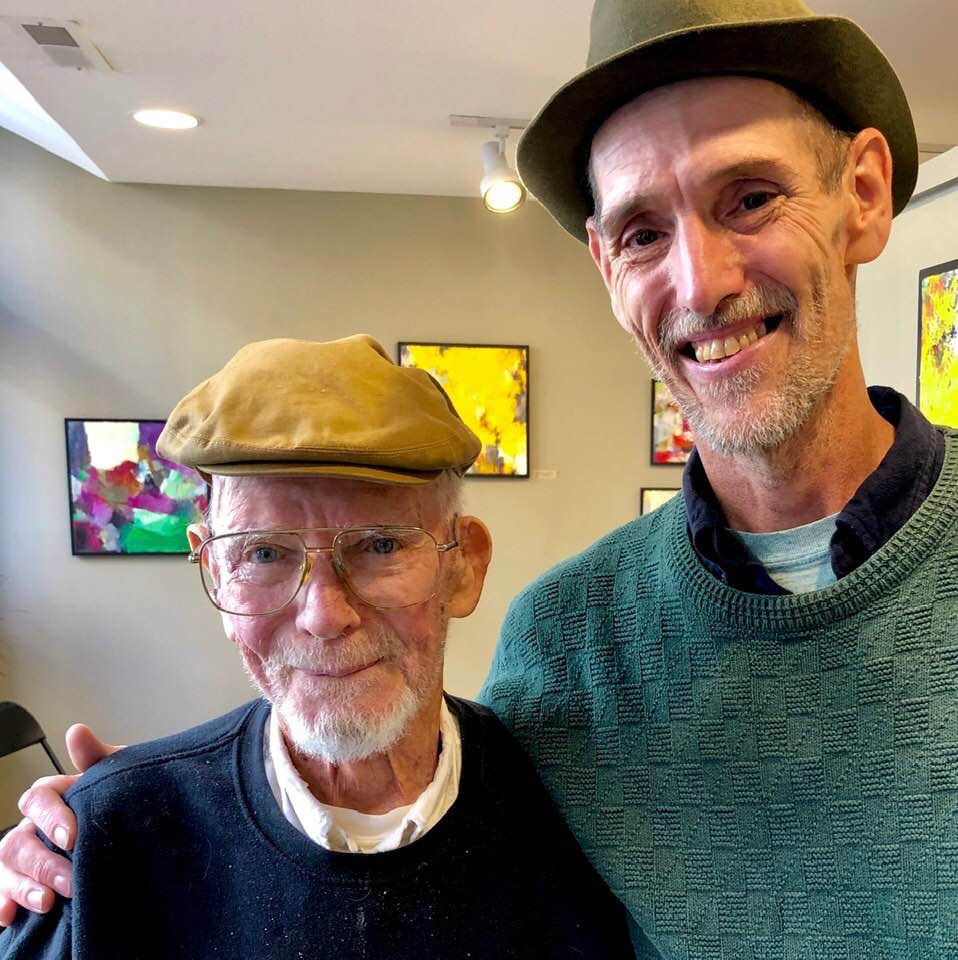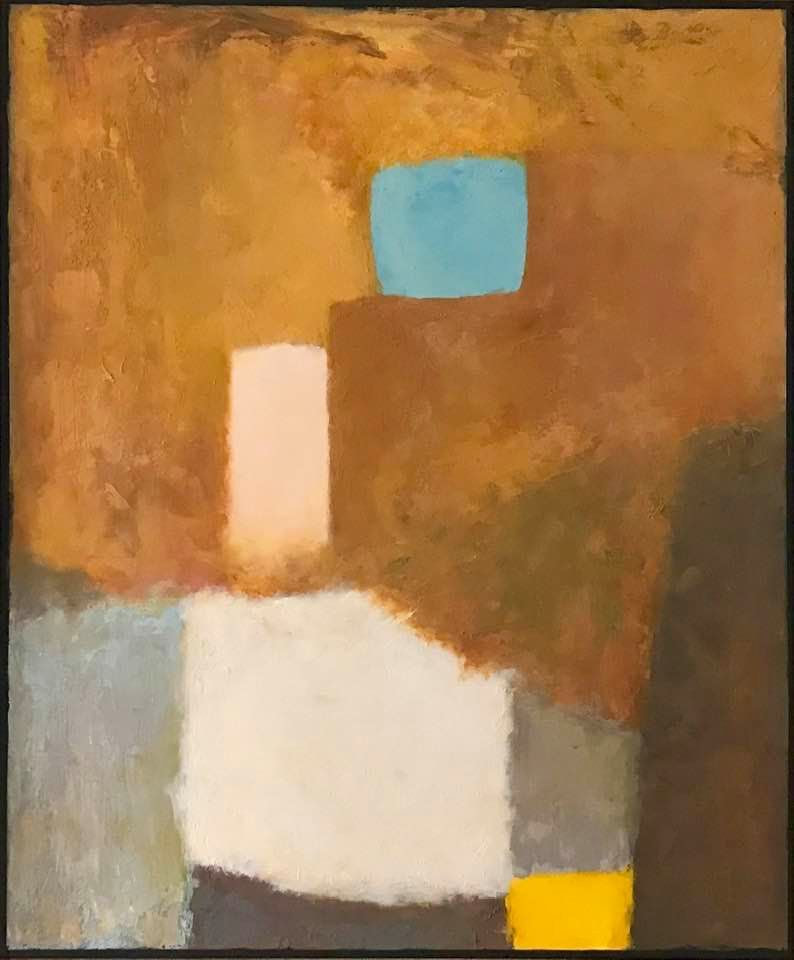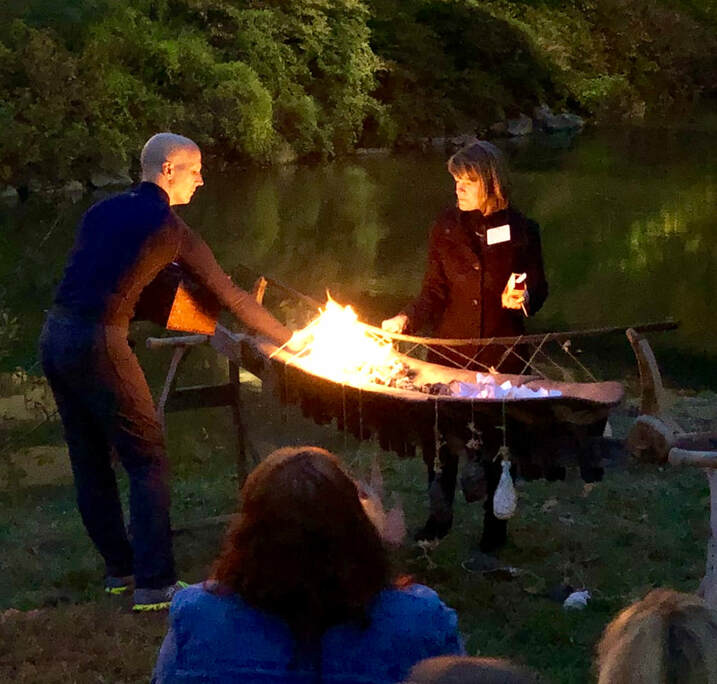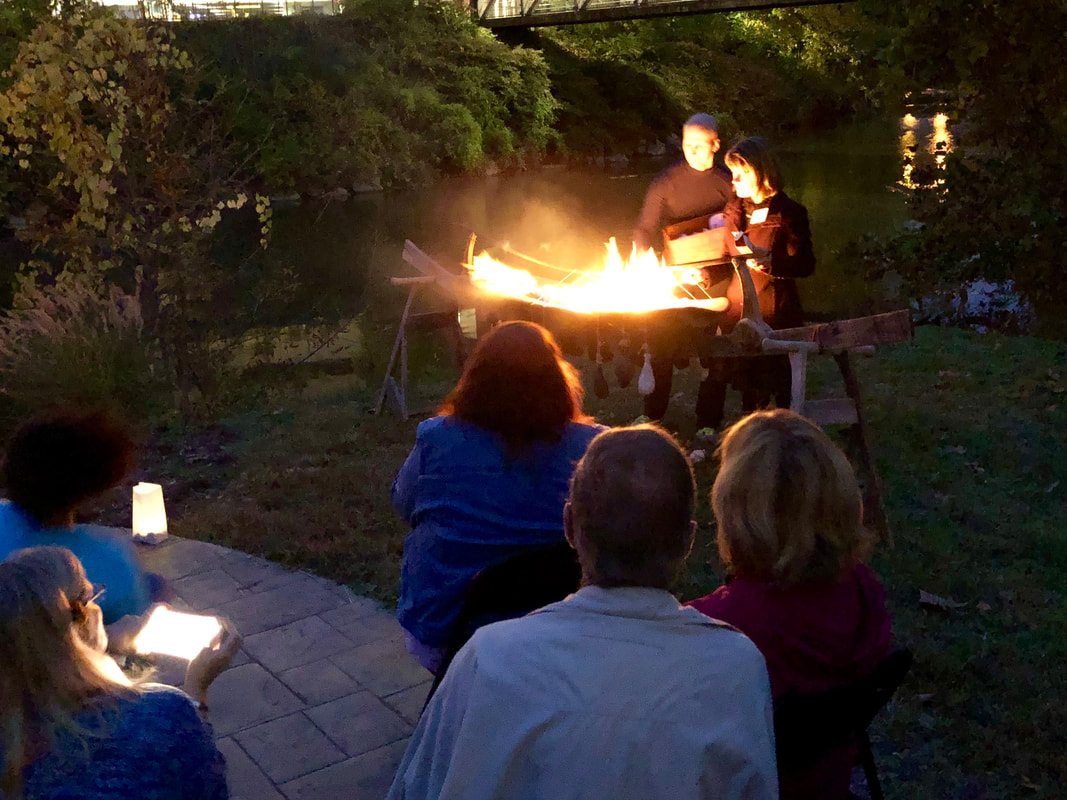Nearly 30 years a ago, I’d just been hired and tasked via a small grant awarded to the Art Museum of Western Virginia (now the Taubman Museum of Art) to create a modest outreach project that might share a few pieces of their little collection of African art with some local schools. As is standard, all the art in a museum collection (the mission of which includes preserving it for future generations) must be protected, in this project within secure plexiglass cases. Via a friend of a friend in Roanoke, who’d heard about him but never met him, I connected to Tom McNemar, an “eccentric” African art collector. When I arrived at his nice house in a typically nice neighborhood, his yard felt more lush than the others. I walked passed the many miniature Japanese Maples, small pond, dozens of flowers (of all textures and colors) within the carefully groomed gardens in the small front yard of his turn of the century home, and approached the door. On the porch I was struck by an unusual pungent yet sweet scent. When I walked in the door of his home, like most “first-timers,” I was rendered speechless.
There’s far too many stories to convey in a post, but this extraordinary, eclectic, maverick-minded, quiet but always forthright man lived (and continues to be) in one of the most beautiful homes I’ve ever been in—certainly the most richly adorned and interesting. Lining the many shelves in each perfectly considered, earthy yet very elegantly arrayed rooms, were hundreds of objects of art from what is referred to as “west Africa.” That “scent” was literally the smell of objects (wood, ivory, oils, raffia, skin) of these cultures and lands in Africa. Not random objects, —these were to a piece very finely made objects, many ritually-used, more not, but to Tom, that was always less important than their beauty. There are headpieces, carved ivory implements, tools, and ornaments, shaman boxes, brass weights, head rests, royal seats, some musical instruments, vessels, figurines of all shapes and sizes. Every single one was carefully mounted to show off its unique beauty, and they were (still are) literally everywhere one looked. They were in the living room, the parlor, the dining room, the kitchen, the upstairs bedrooms and office and TV room, the basement rooms, and the attic. And of course, there have always been felines.
More significant is the quiet man who collected these amazing pieces. He is a self-trained expert on African art, having on his own initiative learned from handling thousands of works in the storage rooms of the greatest collections of African art in the museums of Europe, reading extensively and weighing scholars and their theories against the reality he experienced after eventually moving to live for many years in the Côte d’Ivoire (and oft-times catching their BS). I’ve always gravitated toward wise people like Tom who were willing to admit what they didn’t know. To me this makes their view far more trustworthy. Very known in certain circles, he’s informally guided a generation of younger scholars. He began enjoying and collecting the objects of these mostly un-appreciated, often abused cultures, well before art museums considered it “art.” After establishing himself as a reputable dealer/gallery owner in NYC and San Francisco for many years, he finally returned to his hometown in Lexington, VA about 40 years ago.
There, he bought (and pretty much saved) a decaying, headed down-hill house, which he then fully renovated into his now sumptuous home. He has an impeccable aesthetic eye, and over the years it has become a showcase in its own right. Besides the furnishings, there is art by a handful of others, synchronistically, the majority by another of the most influential creative people in my life, Barton Benes, who was once his partner and remained a longtime friend. Tom also came up with rich color schemes to set everything off, and ideal methods of displaying these wonderful and sometimes aesthetically unique works.
Tom relinquished the academic path into which he had invested years, instead followed his instincts and heart on an unplanned, unexpected, uncertain journey that led him to find this special calling. He defied traditions and norms, personally and professionally—a gay man in the days when it was not only not accepted in many regions, but illegal, and an actual uncompromisingly honest dealer in authentic cultural artifacts, another rarity. His integrity, intelligence, diligence and hard work (and just perhaps the universe opening up to someone aiming to be their honest self — or, more preferable to Tom’s ideology, just a random good dose of luck), all combined to allow him to achieve an incredible serene life amid beautiful things.
In my 15 years of art museum work, and many decades as an artist I’ve been in the homes of hundreds of fine art collectors. More than any collector I’ve met Tom genuinely appreciates looking at, no, savoring, the pieces with which he has surrounded himself. He takes great joy in rediscovering the special beauty in each, or sensing the new dynamic of one relocated to a shelf next to a certain other, or one in the storage space attic “calling” or “begging to be brought down” into the company of those more privileged living room counterparts. These pieces have never been mere investments for him, but rather potent, charismatic, beautifully crafted works with which he has, over many decades fostered and engaged in special relationships. He came to appreciate both their use and an often misunderstood role collectors filled in historical/cultural preservation — many of these objects were discarded by their cultures (having lost their “spirit energy”) to the village scrap pile where they would have quickly turned into dust via termites and a rain forest climate. Mostly however, he loves the fecund beauty—an unending array of inventive formal design, conspicuously on display between cultures, forms, and within each work.
I humbly inquired on my second trip if he might have a couple of less-valued things I might allow the kids to gently touch. We both remember that special moment: “John, if you’ll let them touch it, you can use pretty much anything in the house.” He recalls the look on my face that instant; I recall words and intentions and generosity of heart one NEVER hears from art collectors. It was an extraordinary offer, of which I (an art maker and “hands-on advocate”) took full advantage. The small project became a stunning touring exhibition. What was intended to be a tour of a few months and viewing by art classes at six schools evolved so all students experienced it, in dozens of schools across numerous counties, and was extended several times over. Later it became the nucleus for a larger exhibition of his African art in the museum itself.
The incredible (and deserved) popularity and educational success of the “Vital Forces: Art of West Africa” outreach project enabled us to win many more grants and crucial funding support. It turned my 2.5 day/week part-time museum job into three, then four, then five days a week. Which significantly allowed me to gain important steady work for our household during those lean, new parents years as our infant son grew into school age. The fledgling ArtVan project soon more than paid for itself and had several different themes over 8 years, and reached students across all of southwestern Virginia. We figured out how to use summers to reach others, like camp participants, folks in assisted living facilities, and underserved populations in rural and inner city settings.
Ultimately it offered direct, hands-on art experiences to somewhere in the neighborhood of 60,000 folks of all ages during its tenure. Mostly because of this man’s stubborn, anti-establishment insistence, and his generosity and wisdom that this was the best way to begin to truly connect to another culture through its artifacts. It validated that an art museum could offer hands-on experiences in-house too, leading to the first studio set-up and multi-sensory art education facility in our local art museum, which we called ArtVenture. This successful concept eventually was incorporated and has since been expertly expanded upon in our current Taubman Museum of Art. Mostly because a big-hearted, generous, and always forthright person said f*ck you (literally, and often) to conventions and snobbish etiquette in favor of an appreciation of non-linear ways of thinking and learning, encouraging personal discovery, and shared joy.
By ideology and action, his example and mentorship encouraged me to push the art museum experience beyond traditions. His life’s work has enriched and subtly affected the lives of thousands of others as well. We have remained in touch these 27 years later. He’s battling severe skin cancer right now. Doing so in his typical, wry-humored, loveable curmudgeon, independent-minded way. He learned to be set in his decisions long ago. So, even many years before his illness he liked to happily declare that having resettled back home after decades of continent hopping, he had felt no desire to leave his birthplace of Rockbridge County during the last twenty five years.
Of sound mind yet understandably a bit frail, last Sunday, with the steadfast assistance and grace of our mutual friend, his neighbor Caroline Van Leer, he relinquished his own longstanding “code of pride” and left his county to come visit my art exhibition. Once again giving. I’m still moved to tears considering this gesture.
Today, decades after I’ve left the art museum profession, I realize how over these years of friendship, he also kept a crucial, vital, more personal flame lit within me. Sometimes simply visiting him in his tranquil yet vital oasis strengthened my resolve. By example, he encouraged me to allow myself to be me. He quietly encouraged me to believe in myself, even after going through life's inevitable rejections by others. He proved one can forge a path listening to one’s instincts. I gained confidence to trust and follow my heart. In these and so many other ways he nudged the trajectory of my life. In a word, knowing him has made me a better me. What greater gift can we receive from someone? I’m forever thankful for the grace that has allowed me to come to know wise and kind people like him. I love him for all he’s done for me, how he’s broadened my understanding, connected me to me, deeply enhanced my life, and that of so very many others.




 RSS Feed
RSS Feed